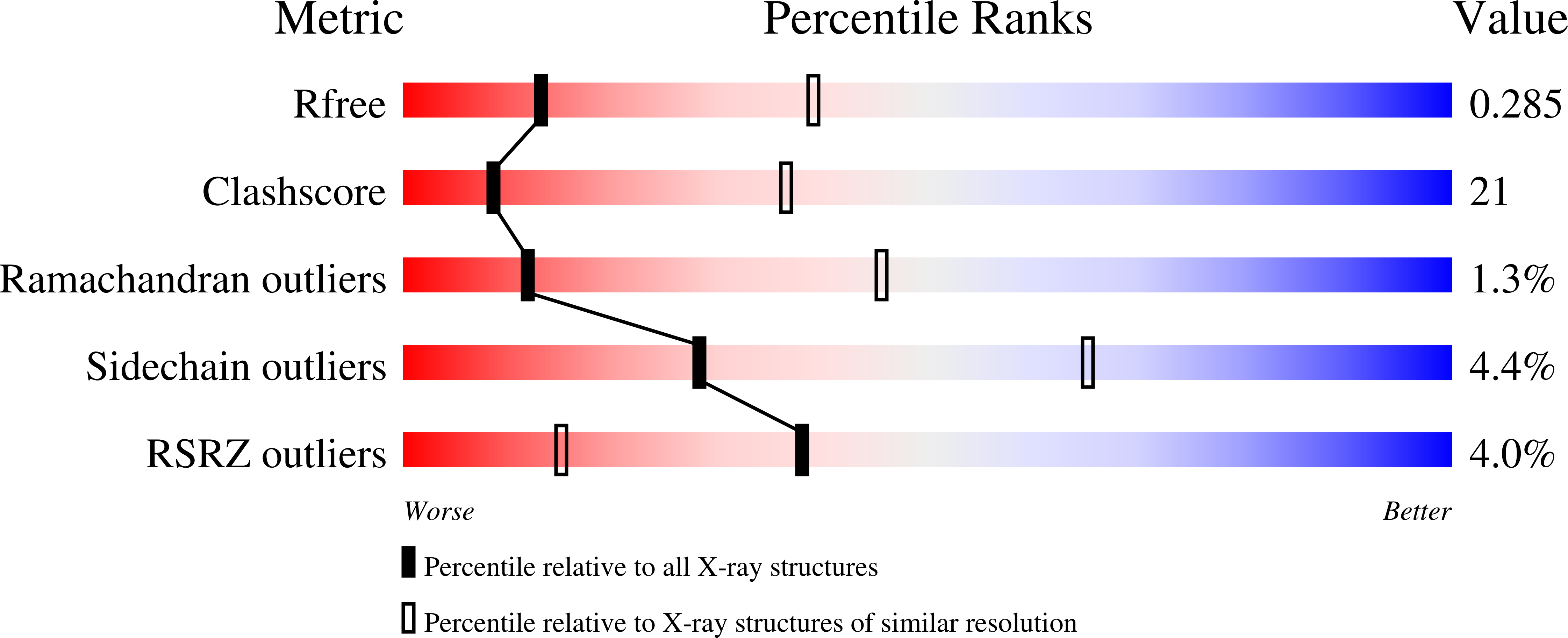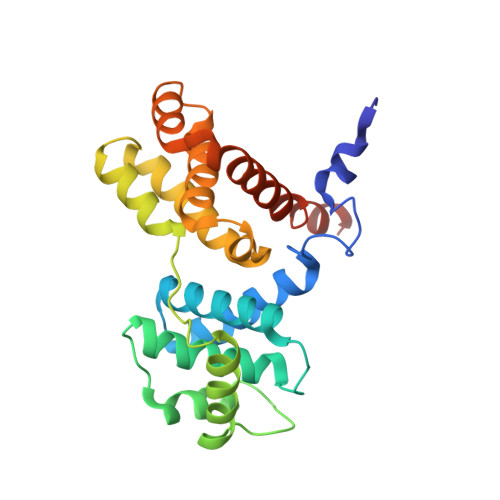Structure of the Mediator Subunit Cyclin C and its Implications for CDK8 Function.
Hoeppner, S., Baumli, S., Cramer, P.(2005) J Mol Biol 350: 833-842
- PubMed: 15979093
- DOI: https://doi.org/10.1016/j.jmb.2005.05.041
- Primary Citation of Related Structures:
1ZP2 - PubMed Abstract:
Cyclin C binds the cyclin-dependent kinases CDK8 and CDK3, which regulate mRNA transcription and the cell cycle, respectively. The crystal structure of cyclin C reveals two canonical five-helix repeats and a specific N-terminal helix. In contrast to other cyclins, the N-terminal helix is short, mobile, and in an exposed position that allows for interactions with proteins other than the CDKs. A model of the CDK8/cyclin C pair reveals two regions in the interface with apparently distinct roles. A conserved region explains promiscuous binding of cyclin C to CDK8 and CDK3, and a non-conserved region may be responsible for discrimination of CDK8 against other CDKs involved in transcription. A conserved and cyclin C-specific surface groove may recruit substrates near the CDK8 active site. Activation of CDKs generally involves phosphorylation of a loop at a threonine residue. In CDK8, this loop is longer and the threonine is absent, suggesting an alternative mechanism of activation that we discuss based on a CDK8-cyclin C model.
Organizational Affiliation:
Gene Center, University of Munich (LMU), Department of Chemistry and Biochemistry, Feodor-Lynen-Str. 25, 81377 Munich, Germany.














